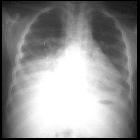fish vertebra

Fish vertebra
• Codfish vertebra - osteoporosis - Ganzer Fall bei Radiopaedia

Fish vertebra
• Codfish vertebra - Ganzer Fall bei Radiopaedia

Fish vertebra
• Codfish vertebra - Ganzer Fall bei Radiopaedia
Fish vertebra, also known as codfish vertebra, describes the biconcave appearance of vertebrae (especially lumbar vertebrae).
Pathology
Etiology
- osteoporosis
- sickle cell disease: caution required as more usually an H-shaped vertebra
- hereditary spherocytosis
- homocystinuria
- renal osteodystrophy
- osteogenesis imperfecta
- osteomalacia
- thalassemia major (rarely)
History and etymology
The term fish vertebrae is attributed to Fuller Albright (1900-1969), American endocrinologist. In 1941, he used the term to describe the likeness of the biconcave shape of the human vertebrae to the biconcave shape of fish vertebrae; although the species was unspecified. In 1948, Fuller Albright and Edward Reifenstein (1908-1975), an American endocrinologist, provided images of codfish vertebra to illustrate the deformation of vertebral bodies seen in postmenopausal osteoporosis , hence the term codfish vertebrae .
See also
Siehe auch:
und weiter:

 Assoziationen und Differentialdiagnosen zu fish vertebra:
Assoziationen und Differentialdiagnosen zu fish vertebra:


